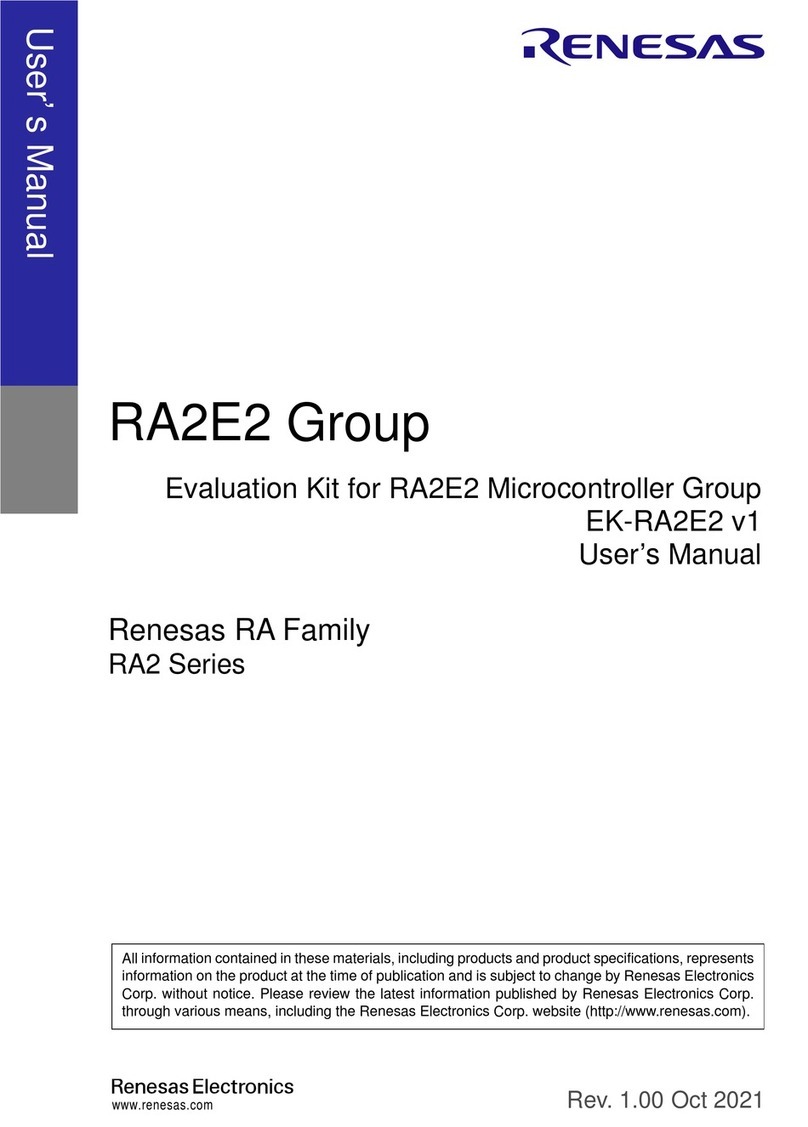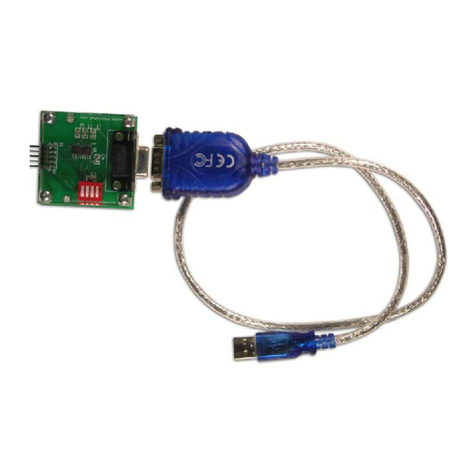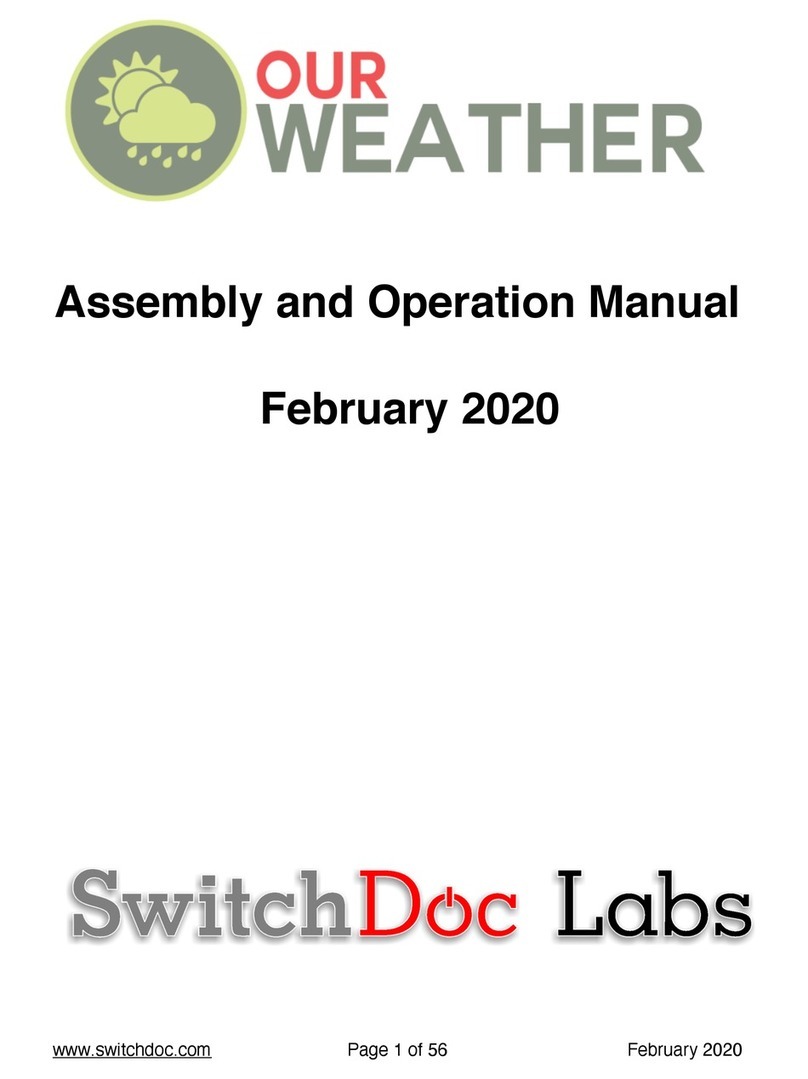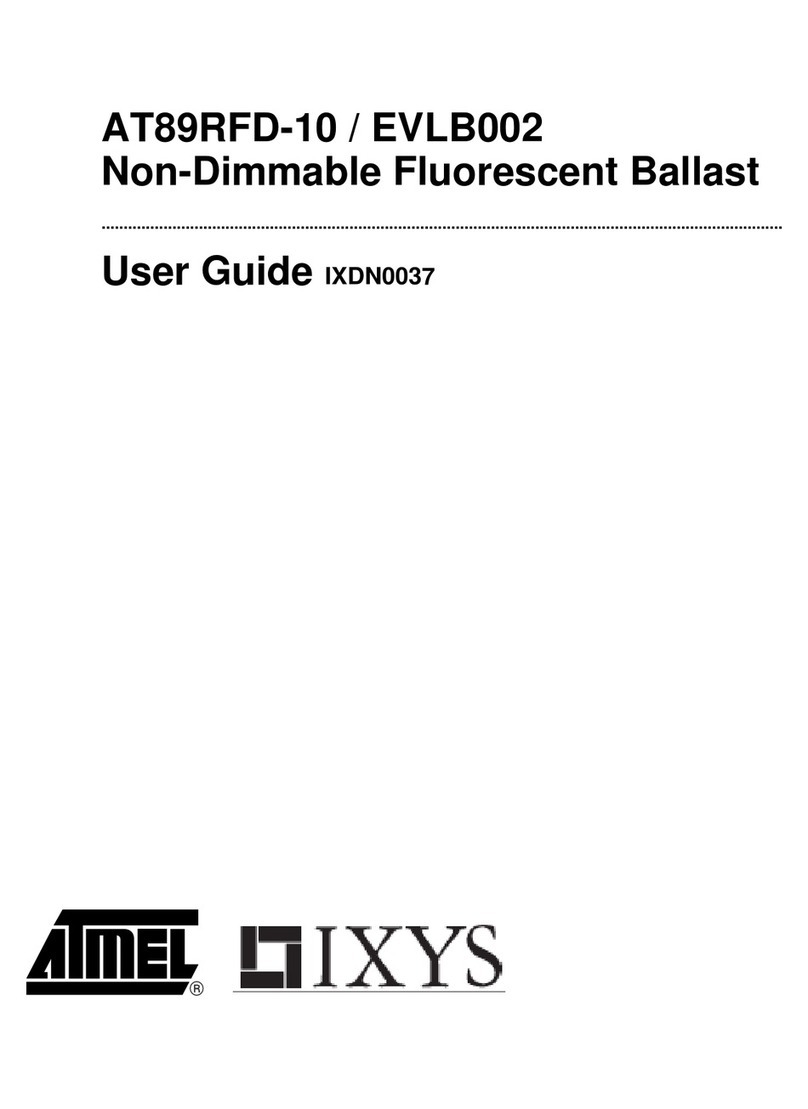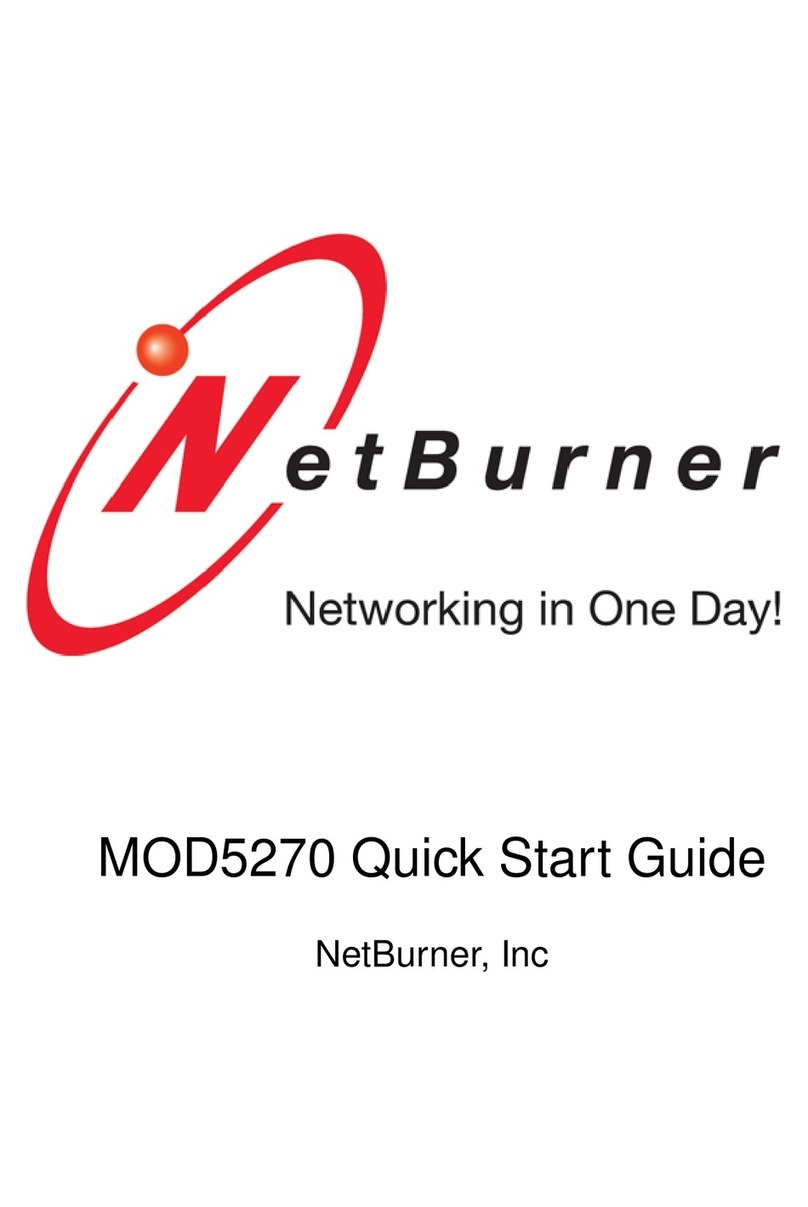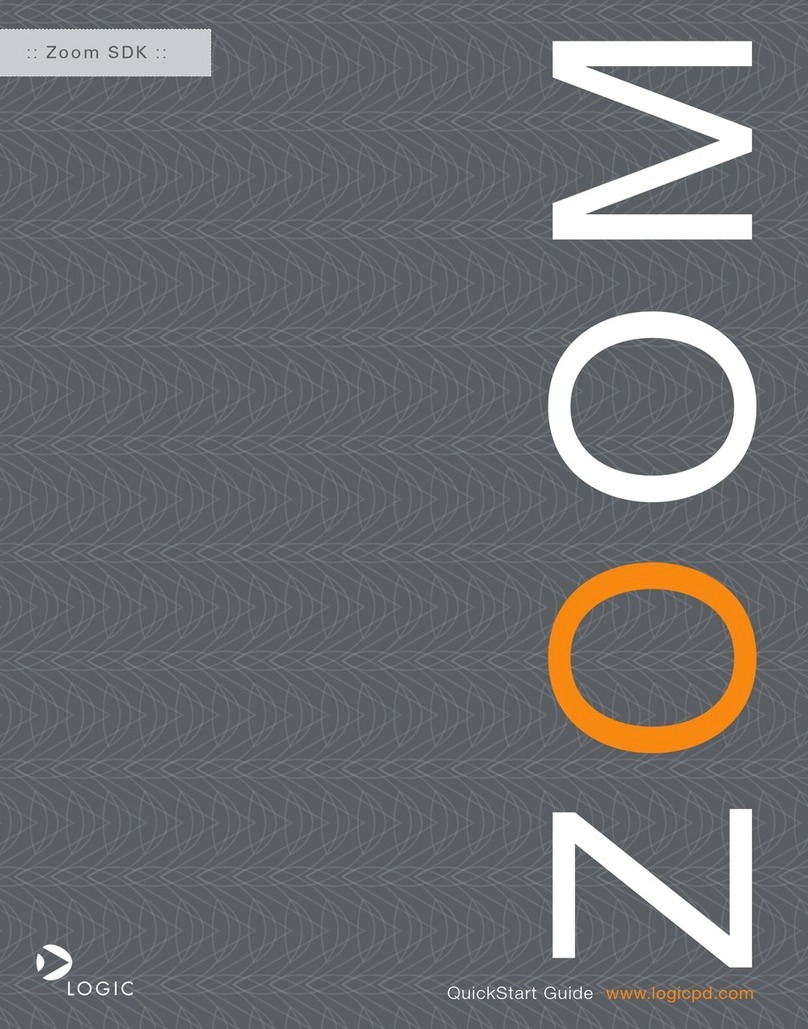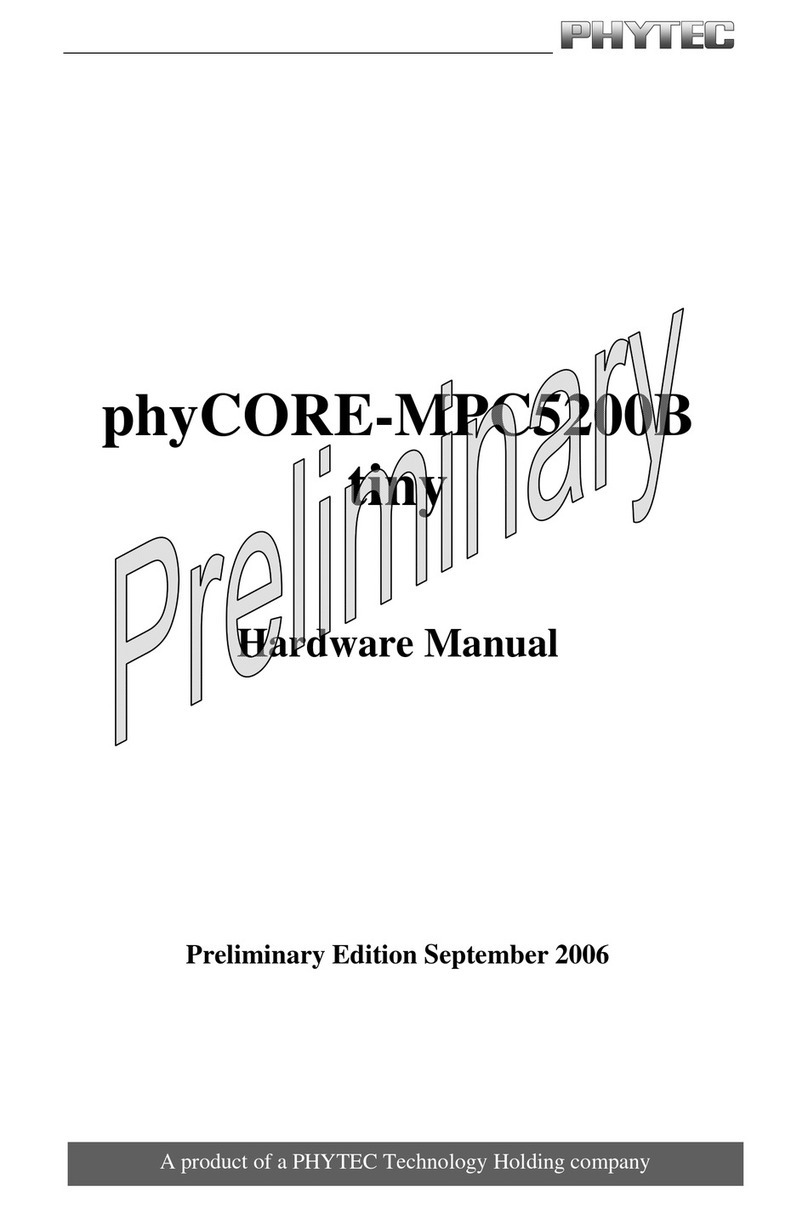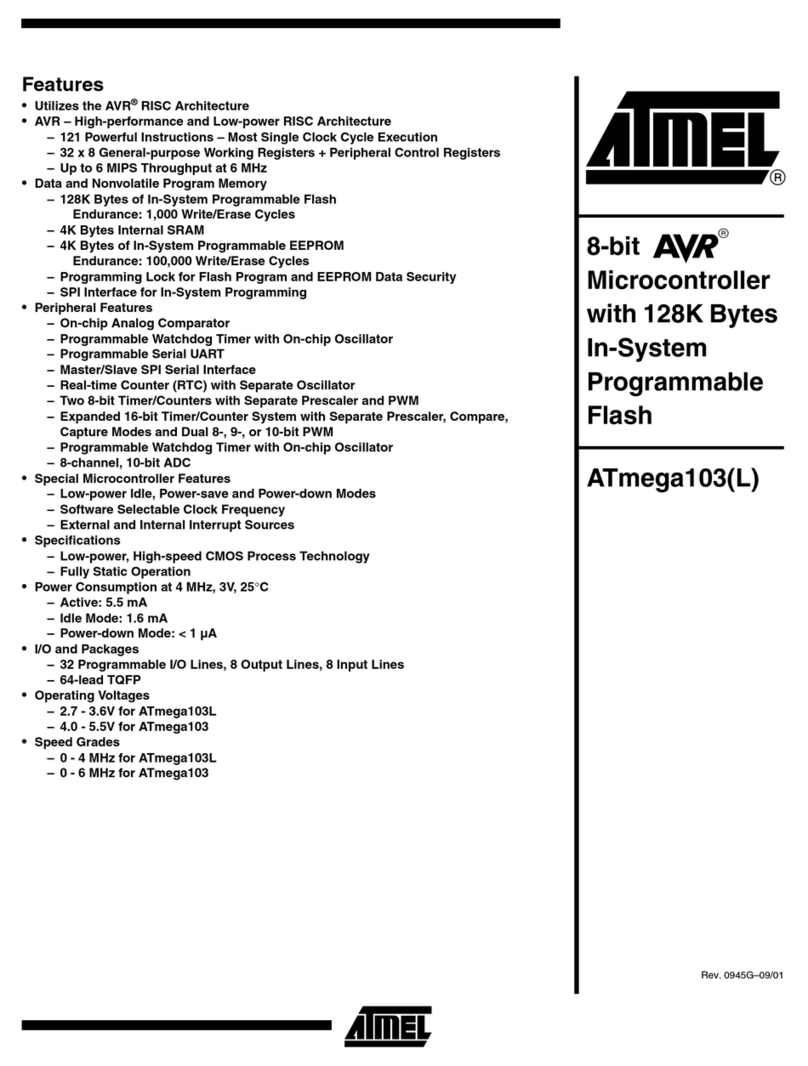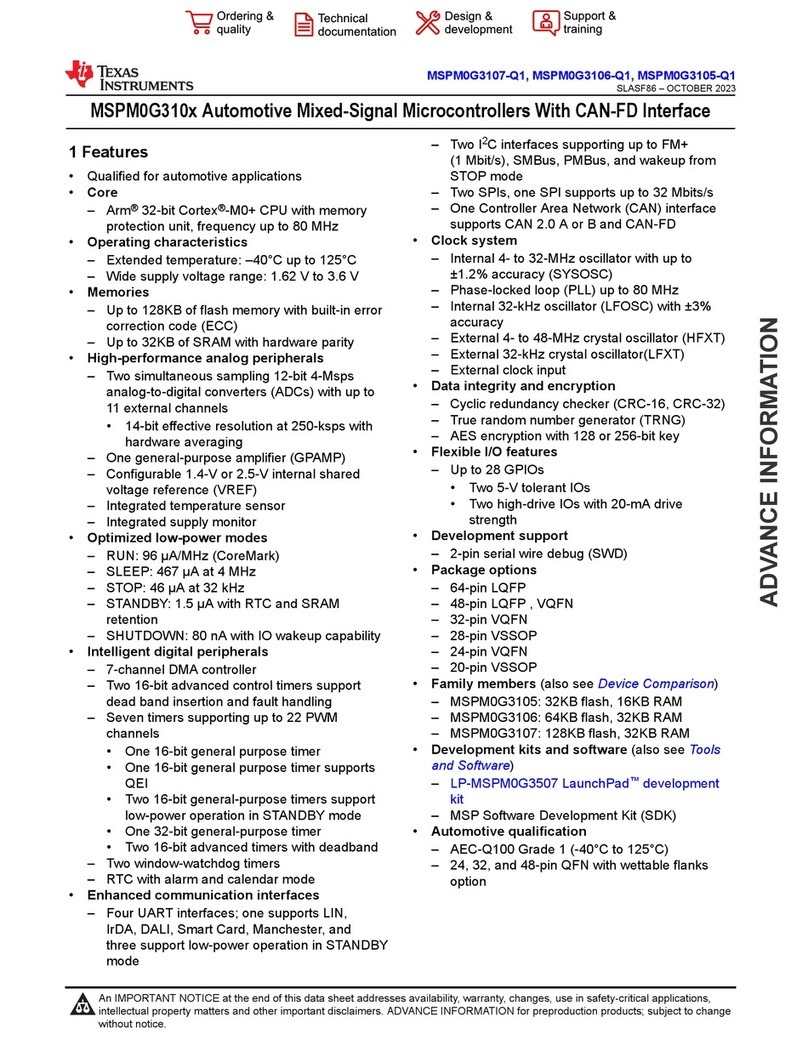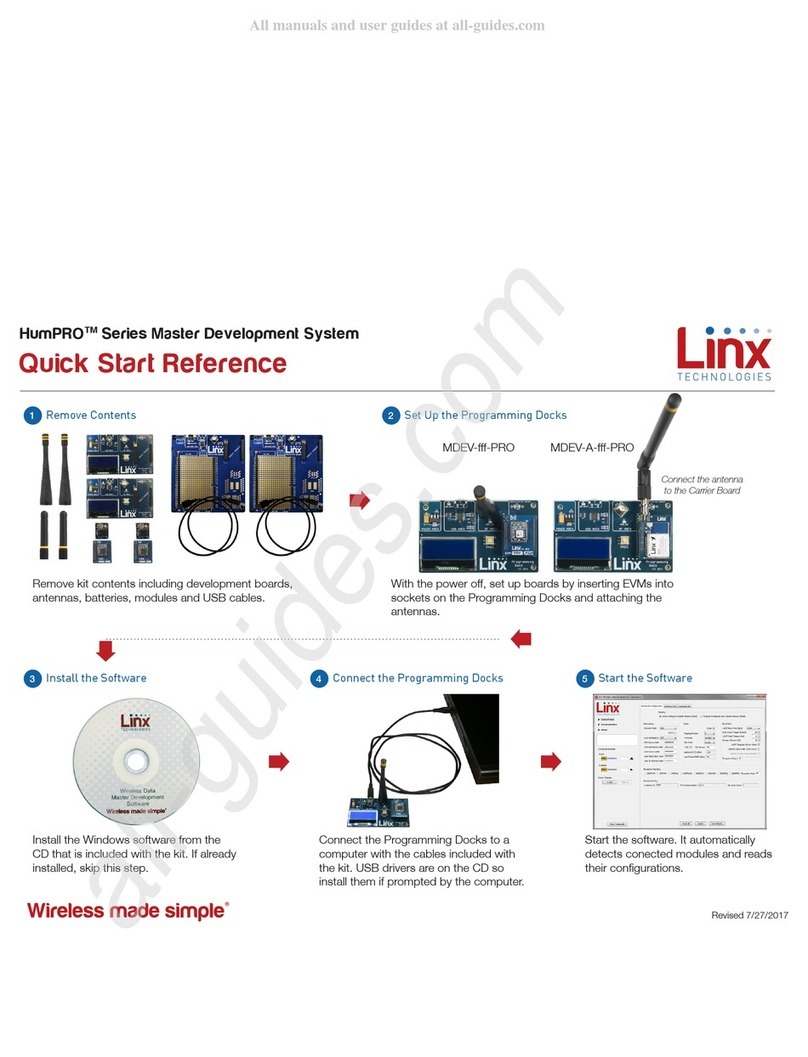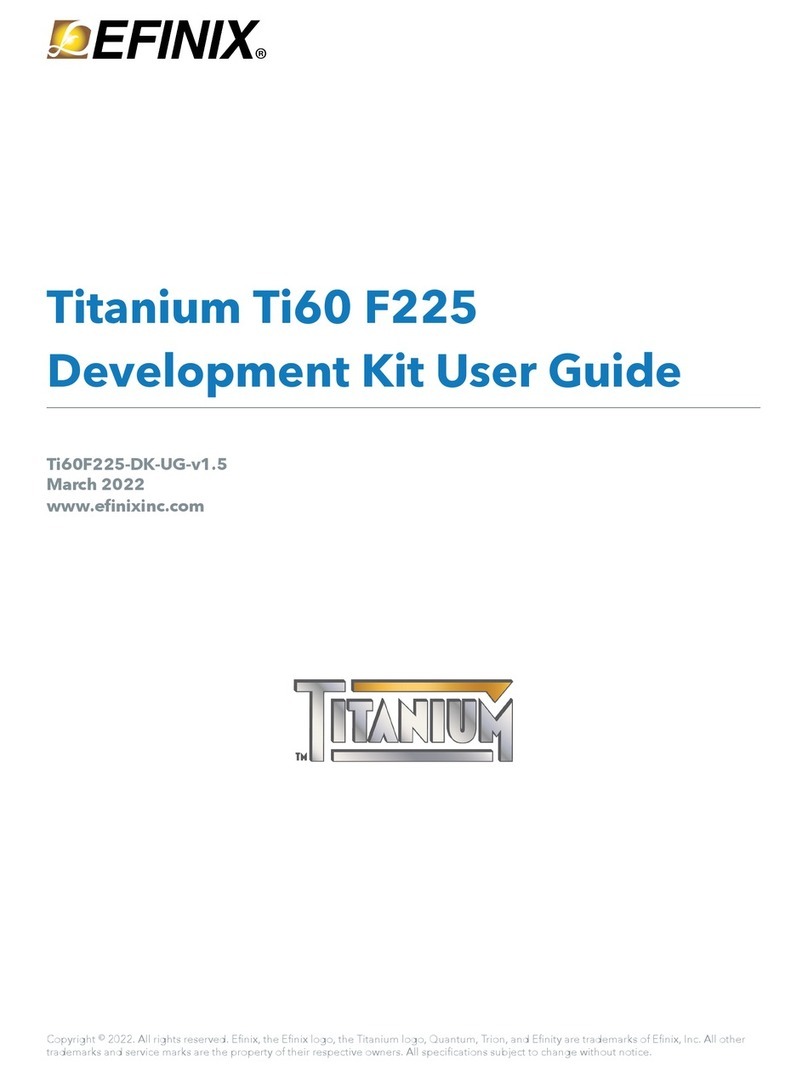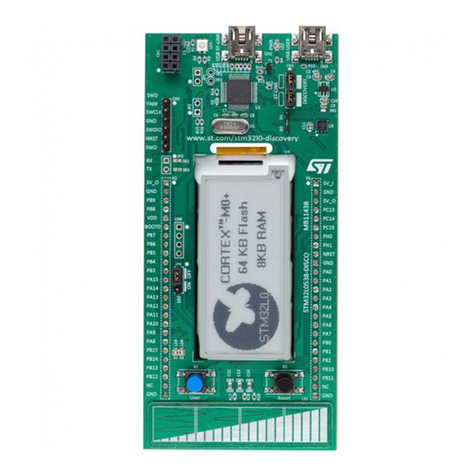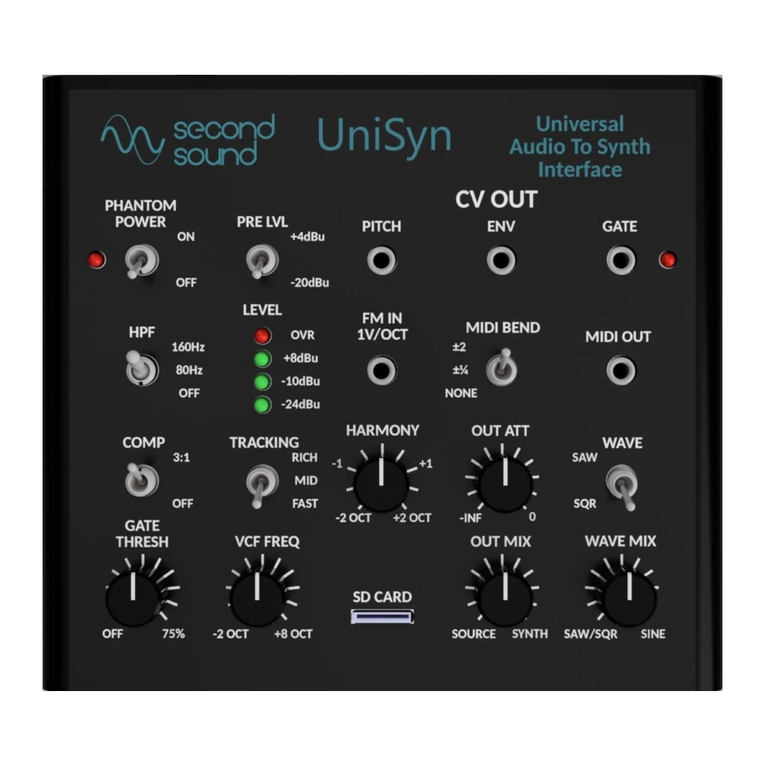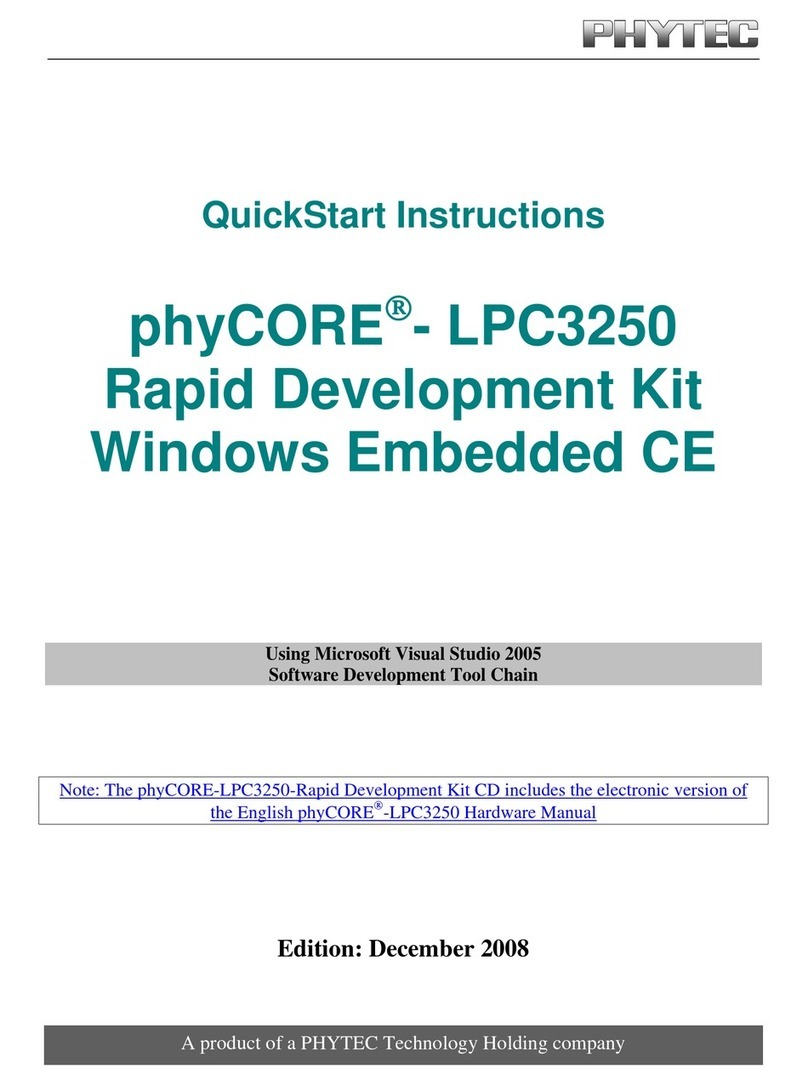AAC Microtec Sirius OBC User manual

Document number
205065
Version
Rev E
Issue date
2017-03-07
Sirius OBC and TCM User Manual
www.aacmicrotec.com
Page 1of 131
Sirius OBC and TCM User Manual
Rev E
© ÅAC Microtec 2017
ÅAC Microtec AB owns the copyright of this document which is supplied in confidence and which shall
not be used for any purpose other than for which it is supplied and shall not in whole or in part be
reproduced, copied, or communicated to any person without written permission from the owner.

Document number
205065
Version
Rev E
Issue date
2017-03-07
Sirius OBC and TCM User Manual
www.aacmicrotec.com
Page 2of 131
REVISION LOG
Rev
Date
Change description
A
2016-10-25
First release, drafted from 204911 Sirius Breadboard User Manual
Rev L
B
2016-12-15
Updated after editorial updates
C
2017-01-03
Release with updates to the following sections:
Massmem (new API with DMA)
Error manager (IOCTL API)
ADC (channel table update, channel limitation)
Sirius TCM (TM/TC defaults, API updates {errno, MMStatus,
TMTSStatus, }, removed limitations)
Bootrom (extended description)
SCET (extended description, new API)
UART32 (removed)
CCSDS (interrupt API deprecation)
NVRAM (EDAC/non-EDAC modes described)
D
2017-02-01
Release with updates to the following sections:
Sirius TCM (Extra info sections, TMBRSet->TMBRControl)
Mass memory (IOCTL API, error inject info)
SCET (Clarify threshold)
E
2017-03-01
Release with updates to the following sections:
ADC (minor updates to clock div limits)
Setup and operation (find debugger serial, use of multiple
debuggers)

Document number
205065
Version
Rev E
Issue date
2017-03-07
Sirius OBC and TCM User Manual
www.aacmicrotec.com
Page 3of 131
TABLE OF CONTENT
1. INTRODUCTION............................................................................................................... 6
1.1. Applicable releases........................................................................................................................................ 6
1.2. Intended users................................................................................................................................................ 6
1.3. Getting support............................................................................................................................................... 6
1.4. Reference documents .................................................................................................................................... 7
2. EQUIPMENT INFORMATION........................................................................................... 8
2.1. System Overview with peripherals ............................................................................................................... 8
3. SETUP AND OPERATION...............................................................................................10
3.1. User prerequisites........................................................................................................................................ 10
3.2. Connecting cables to the Sirius products.................................................................................................. 11
3.3. Installation of toolchain ............................................................................................................................... 12
3.3.1. Supported Operating Systems................................................................................................................. 12
3.3.2. Installation Steps...................................................................................................................................... 12
3.4. Installing the Board Support Package (BSP) ............................................................................................. 13
3.5. Deploying a Sirius application .................................................................................................................... 13
3.5.1. Establish a debugger connection to the Sirius products........................................................................... 13
3.5.2. Setup a serial terminal to the device debug UART................................................................................... 14
3.5.3. Loading an application............................................................................................................................. 15
3.5.4. Using multiple debuggers on the same PC.............................................................................................. 15
3.6. Programming an application (boot image) to system flash...................................................................... 16
4. SOFTWARE DEVELOPMENT.........................................................................................18
4.1. RTEMS step-by-step compilation................................................................................................................ 18
4.2. Software disclaimer of warranty ................................................................................................................. 18
5. RTEMS.............................................................................................................................19
5.1. Introduction .................................................................................................................................................. 19
5.2. Watchdog...................................................................................................................................................... 20
5.2.1. Description............................................................................................................................................... 20
5.2.2. RTEMS API.............................................................................................................................................. 20
5.2.3. Usage....................................................................................................................................................... 21
5.3. Error Manager............................................................................................................................................... 23
5.3.1. Description............................................................................................................................................... 23
5.3.2. RTEMS API.............................................................................................................................................. 23
5.3.3. Usage....................................................................................................................................................... 28
5.3.4. Limitations................................................................................................................................................ 30
5.4. SCET.............................................................................................................................................................. 31
5.4.1. Description............................................................................................................................................... 31
5.4.2. General purpose triggers ......................................................................................................................... 31
5.4.3. Pulse-Per-Second (PPS) signals ............................................................................................................. 31
5.4.4. RTEMS API.............................................................................................................................................. 32
5.4.5. Usage....................................................................................................................................................... 37
5.4.6. PPS.......................................................................................................................................................... 37
5.4.7. Event callback via message queue.......................................................................................................... 37
5.4.8. RTEMS application example.................................................................................................................... 38
5.5. UART.............................................................................................................................................................. 41
5.5.1. Description............................................................................................................................................... 41

Document number
205065
Version
Rev E
Issue date
2017-03-07
Sirius OBC and TCM User Manual
www.aacmicrotec.com
Page 4of 131
5.5.2. RTEMS API.............................................................................................................................................. 41
5.5.3. Usage description .................................................................................................................................... 44
5.5.4. Limitations................................................................................................................................................ 45
5.6. Mass memory................................................................................................................................................ 45
5.6.1. Description............................................................................................................................................... 45
5.6.2. Data Structures........................................................................................................................................ 46
5.6.3. RTEMS API.............................................................................................................................................. 47
5.6.4. Usage....................................................................................................................................................... 53
5.6.5. Error injection........................................................................................................................................... 56
5.6.6. Limitations................................................................................................................................................ 56
5.7. Spacewire...................................................................................................................................................... 57
5.7.1. Description............................................................................................................................................... 57
5.7.2. RTEMS API.............................................................................................................................................. 57
5.7.3. Usage description .................................................................................................................................... 59
5.8. GPIO............................................................................................................................................................... 62
5.8.1. Description............................................................................................................................................... 62
5.8.2. RTEMS API.............................................................................................................................................. 62
5.8.3. Usage description .................................................................................................................................... 65
5.8.4. Limitations................................................................................................................................................ 66
5.9. CCSDS........................................................................................................................................................... 67
5.9.1. Description............................................................................................................................................... 67
5.9.2. RTEMS API.............................................................................................................................................. 67
5.9.3. Usage description .................................................................................................................................... 72
5.10. ADC.............................................................................................................................................................. 74
5.10.1. Description............................................................................................................................................. 74
5.10.2. RTEMS API............................................................................................................................................ 75
5.10.3. Usage description .................................................................................................................................. 78
5.10.4. Limitations.............................................................................................................................................. 79
5.11. NVRAM ........................................................................................................................................................ 80
5.11.1. Description............................................................................................................................................. 80
5.11.2. EDAC mode........................................................................................................................................... 80
5.11.3. Non-EDAC mode ................................................................................................................................... 80
5.11.4. RTEMS API............................................................................................................................................ 80
5.11.5. Usage description .................................................................................................................................. 83
6. SPACEWIRE ROUTER....................................................................................................85
7. SIRIUS TCM.....................................................................................................................86
7.1. Description.................................................................................................................................................... 86
7.2. Block diagram............................................................................................................................................... 87
7.3. TCM-S application overview........................................................................................................................ 87
7.4. Configuration................................................................................................................................................ 88
7.5. Telemetry....................................................................................................................................................... 90
7.6. Telecommands ............................................................................................................................................. 91
7.7. Pulse commands.......................................................................................................................................... 92
7.8. COP-1............................................................................................................................................................. 92
7.9. Time Management ........................................................................................................................................ 92
7.10. Error Management and System Supervision ........................................................................................... 92
7.11. Mass Memory Handling.............................................................................................................................. 93
7.12. ECSS standard service .............................................................................................................................. 93
7.12.1. PUS-1 Telecommand verification service .............................................................................................. 93
7.12.2. PUS-2 Device Command Distribution Service....................................................................................... 94

Document number
205065
Version
Rev E
Issue date
2017-03-07
Sirius OBC and TCM User Manual
www.aacmicrotec.com
Page 5of 131
7.13. Spacewire RMAP ........................................................................................................................................ 94
7.13.1. Input....................................................................................................................................................... 95
7.13.1. Output.................................................................................................................................................... 96
7.13.2. Status code in reply messages .............................................................................................................. 96
7.14. RMAP address details................................................................................................................................ 96
7.14.1. Input....................................................................................................................................................... 96
7.14.2. Output.................................................................................................................................................. 111
7.15. Handling of Rd/Wr-pointers and wrap-flags for partitions.................................................................... 111
7.16. Limitations ................................................................................................................................................ 112
8. SYSTEM-ON-CHIP DEFINITIONS.................................................................................113
8.1. Memory mapping........................................................................................................................................ 113
8.2. Interrupt sources........................................................................................................................................ 114
8.3. SCET timestamp trigger sources.............................................................................................................. 114
8.4. Boot images and boot procedure.............................................................................................................. 115
8.4.1. Description............................................................................................................................................. 115
8.4.2. Block diagram ........................................................................................................................................ 115
8.4.3. Usage description .................................................................................................................................. 115
8.4.4. Limitations.............................................................................................................................................. 116
8.5. Reset behaviour.......................................................................................................................................... 116
8.6. General synchronize method .................................................................................................................... 116
8.7. Pulse command inputs .............................................................................................................................. 116
8.8. SoC information map ................................................................................................................................. 117
9. CONNECTOR INTERFACES.........................................................................................118
9.1. JTAG-RTL, FPGA-JTAG connector........................................................................................................... 118
9.2. DEBUG-SW.................................................................................................................................................. 118
9.3. PWR –Power .............................................................................................................................................. 119
9.4. SPW1 –Spacewire 1................................................................................................................................... 119
9.5. SPW2 –Spacewire 2................................................................................................................................... 120
9.6. ANALOG, Analog input and 3xGPIO (Sirius OBC only) .......................................................................... 120
9.7. DIGITAL, PPS input and 12xGPIO............................................................................................................. 121
9.8. UART0-2 - RS422/485 ................................................................................................................................. 122
9.9. UART3-5 - RS422/485 (Sirius OBC only)................................................................................................... 122
9.10. TRX1 - RS422 Transceiver interface (Sirius TCM only)......................................................................... 124
9.11. TRX2 - LVDS Transceiver interface (Sirius TCM only) .......................................................................... 124
9.12. UMBI –Baseband Umbilical (Sirius TCM only)...................................................................................... 125
9.13. Pulse Command Outputs (Sirius TCM only) .......................................................................................... 126
10. UPDATING THE SIRIUS FPGA...................................................................................127
10.1. Prerequisite hardware.............................................................................................................................. 127
10.2. Prerequisite software............................................................................................................................... 127
10.3. Step by step guide.................................................................................................................................... 127
11. MECHANICAL DATA ..................................................................................................129
12. GLOSSARY.................................................................................................................130

Document number
205065
Version
Rev E
Issue date
2017-03-07
Sirius OBC and TCM User Manual
www.aacmicrotec.com
Page 6of 131
1. Introduction
This manual describes the functionality and usage of the ÅAC Sirius OBC and Sirius TCM
products. The Sirius OBCor Sirius TCM differ in certain areas such as the SoC, interfaces
etc. but can mostly be described with the same functionality and will throughout this
document be referred to as “the Sirius products” when both products are referred at the
same time.
1.1. Applicable releases
This version of the manual is applicable to the following software releases:
Sirius OBC 0.10.0
Sirius TCM 0.10.0
1.2. Intended users
This manual is written for software engineers using the ÅAC Sirius products. The electrical
and mechanical interface is described in more detail in the electrical and mechanical ICD
documents [RD10] and [RD11].
1.3. Getting support
If you encounter any problem using the Sirius products or another ÅAC product please use
the following address to get help:
Email: [email protected]

Document number
205065
Version
Rev E
Issue date
2017-03-07
Sirius OBC and TCM User Manual
www.aacmicrotec.com
Page 7of 131
1.4. Reference documents
RD#
Document ref
Document name
RD1
http://opencores.org/openrisc,architecture
OpenRISC 1000 Architecture
Manual
RD2
ECSS-E-ST-50-12C
SpaceWire –Links, nodes,
routers and networks
RD3
ECSS-E-ST-50-52C
SpaceWire –Remote memory
access protocol
RD4
ECSS-E-70-41A
Ground systems and
operations –Telemetry and
telecommand packet utilization
RD5
SNLS378B
PC16550D Universal
Asynchronous
Receiver/Transmitter with
FIFOs
RD6
AD7173-8, Rev. A
Low Power, 8-/16-Channel,
31.25 kSPS, 24-Bit, Highly
Integrated Sigma-Delta ADC
RD7
Edition 4.10.99.0
RTEMS BSP and Device
Driver Development Guide
RD8
CCSDS 132.0-B-2
TM Space Data Link Protocol
RD9
CCSDS 232.0-B-2
TC Space Data Link Prototcol
RD10
P2-2-96-ICD-014
Sirius OBC electrical and
mechanical ICD
RD11
P2-2-96-ICD-013
Sirius TCM electrical and
mechanical ICD
RD12
SS-EN 61340-5-1
Electrostatics - Part 5-1:
Protection of electronic
devices from electrostatic
phenomena - General
requirements

Document number
205065
Version
Rev E
Issue date
2017-03-07
Sirius OBC and TCM User Manual
www.aacmicrotec.com
Page 8of 131
2. Equipment information
The Sirius OBC and Sirius OBC products are depicted in Figure 3-1 and Figure 3-2.
The Sirius products also include both a debugger interface for downloading and debugging
software applications and a JTAG interface for programming the FPGA during
manufacturing.
The FPGA firmware implements a SoC centered around a 32 bit OpenRISC Fault Tolerant
processor [RD1] running at a system frequency of 50 MHz and with the following set of
peripherals:
Error manager, error handling, tracking and log of e.g. power loss and/or memory
error detection.
SDRAM 64 MB data + 64 MB EDAC running @100MHz
Spacecraft Elapsed Timer (SCET), including a PPS (Pulse Per Second) time
synchronization interface for accurate time measurement with a resolution of 15 µs
SpaceWire, including a three-port SpaceWire router, for communication with
external peripheral units
UARTs uses the RS422 and RS485 line drivers on the board with line driver mode
set by software.
GPIOs
Watchdog, a fail-safe mechanism to prevent a system lockup
System flash of 2 GB with EDAC-protection for storing boot images in multiple
copies
Pulse command inputs for reset to a specific software image
MRAM for storage of metadata and other data that requires a large number of
writes that shall survive loss of power
For the Sirius TCM the following additional peripherals are included in the SoC:
CCSDS, communications IP.
Mass memory of 16GB with EDAC-protection, NAND flash based, for storage of
mission critical data.
For the Sirius OBC an Analog interface is included.
The input power supply provided to the Sirius products shall be between +4.5 and +16 VDC.
The power consumption is highly dependent on peripheral loads and ranges from 0.8 W to
2 W.
2.1. System Overview with peripherals
Figure 2-1 depicts a System-on-Chip (SoC) overview including the related peripherals of the
Sirius OBC and Sirius TCMproducts. The figure shows what parts that are included for
which products.

Document number
205065
Version
Rev E
Issue date
2017-03-07
Sirius OBC and TCM User Manual
www.aacmicrotec.com
Page 9of 131
FPGA
FPU
OpenRISC
1200FT
I/D Cache
I2C
UART
GPIO
CCSDS
Memory
controller
System
flash
controller
Flash
controller
SpaceWire
DMA
Control
Watchdog
Debug
Unit
SCET
Error
manager
2x 64MB
SDRAM
2 GB System
Flash
Radio Interfaces
RS422/LVDS RS422/RS485 JTAG/DEBUG
Pulse CMDUMBI/EGSEETHERNET GPIO
ADC
(Housekeeping)
Ethernet
10/100
ADC
controller
OBC / TCM
NVRAM
Analog inputs
NVRAM
TCM TCM/OBC Future option
16 GB Flash
OBC
PPS
Figure 2-1 - The Sirius OBC / Sirius TCM SoC Overview

Document number
205065
Version
Rev E
Issue date
2017-03-07
Sirius OBC and TCM User Manual
www.aacmicrotec.com
Page 10 of 131
3. Setup and operation
3.1. User prerequisites
The following hardware and software is needed for the setup and operation of the Sirius
products.
PC computer
1 GB free space for installation (minimum)
Debian 7 or 8 64-bit with super user rights
USB 2.0
JTAG debugger
ÅAC JTAG debugger hardware including harness
Recommended applications and software
Installed serial communication terminal, e.g. gtkterm or minicom
Host build system, e.g. the debian package build-essential
The following software is installed by the ÅAC toolchain package
oGCC, C compiler for OpenRISC
oGCC, C++ compiler for OpenRISC
oGNU binutils and linker for OpenRISC
oCustom openocd binary designed for OpenRISC
For FPGA update capabilities
Microsemi FlashPro Express v11.7, http://www.microsemi.com/products/fpga-
soc/design-resources/programming/flashpro#software
FlashPro5 programmer

Document number
205065
Version
Rev E
Issue date
2017-03-07
Sirius OBC and TCM User Manual
www.aacmicrotec.com
Page 11 of 131
3.2. Connecting cables to the Sirius products
Figure 3-1 –ÅAC Sirius Sirius OBC with connector naming
Figure 3-2 - ÅAC Sirius Sirius TCM with connector naming
The instructions below refer to the connector names in Figure 3-1 and Figure 3-2.
JTAG-RTL
DEBUG-SW
SPW1
SPW2
UART0-2
PWR
UART3-5
DIGITAL
ANALOG
JTAG-RTL
DEBUG-SW
UMBI
SPW1
UART0-2
PWR
TRX2-LVDS
TRX1-RS422
DIGITAL
PULSE
SPW2

Document number
205065
Version
Rev E
Issue date
2017-03-07
Sirius OBC and TCM User Manual
www.aacmicrotec.com
Page 12 of 131
All products and ingoing material shall be handled with care to prevent damage of
any kind.
ESD protection and other protective measures shall be considered. Handling
should be performed according to applicable ESD requirement standards such as
[RD12] or equivalent.
Ensure that all mating connectors have the same zero reference (ground) before
connecting.
Connect the nano-D connector to the PWR connector with 4.5 - 16 V DC. The units
will nominally draw about 260-300 mA @5V DC.
The ÅAC debugger is mainly used for development of custom software for the
Sirius OBC or Sirius TCM and has both a debug UART for monitoring and a JTAG
interface for debug capabilities. It is also used for programming an image to the
system flash memory. For further information refer to Chapter 3.6. When it is to be
used, connect the 104452 ÅAC Debugger to the DEBUG-SW connector. Connect
the adapter USB-connector to the host PC.
For FPGA updating only: Connect a FlashPro5 programmer to connector JTAG-
RTL using the 104470 FPGA programming cable assembly. For further information
how to update the SoC refer to Chapter 9.10.
For connecting the SpaceWire interface, connect the nano-D connector to
connector SPW1 or SPW2.
For more detailed information about the connectors, see Chapter 9.
3.3. Installation of toolchain
This chapter describes instructions for installing the aac-or1k-toolchain.
3.3.1. Supported Operating Systems
Debian 7 64-bit
Debian 8 64-bit
When installing Debian, we recommend using the “netinst” (network install) method. Images
for installing Debian 8 are available via https://www.debian.org/releases/jessie/debian-
installer/ and images for installing Debian 7 are available via
https://www.debian.org/releases/wheezy/debian-installer/
In order to install the toolchain below a Debian package server mirror must be added, either
in the installation procedure (also required during network install) or after installation. For
adding a package server mirror after installation, follow the instructions at
https://www.debian.org/doc/manuals/debian-faq/ch-uptodate.en.html
3.3.2. Installation Steps
1. Add the ÅAC Package Archive Server
Open a terminal and execute the following command:
sudo gedit /etc/apt/sources.list.d/aac-repo.list
This will open a graphical editor; add the following lines to the file and then save and
close it:
deb http://repo.aacmicrotec.com/archive/ aac/

Document number
205065
Version
Rev E
Issue date
2017-03-07
Sirius OBC and TCM User Manual
www.aacmicrotec.com
Page 13 of 131
deb-src http://repo.aacmicrotec.com/archive/ aac/
Add the key for the package archive as trusted by issuing the following command:
wget -O - http://repo.aacmicrotec.com/archive/key.asc | sudo
apt-key add -
The terminal will echo "OK" on success.
2. Install the Toolchain Package
Update the package cache and install the toolchain by issuing the following commands:
sudo apt-get update
sudo apt-get install aac-or1k-toolchain
Note: The toolchain package is roughly 1GB uncompressed, downloading/installing it
will take some time.
3. Setup
In order to use the toolchain commands, the shell PATH variable needs to be set to
include them, this can be done either temporarily for the current shell via
source /opt/aac/aac-path.sh
or permanently by editing the ~/.profile file
gedit ~/.profile
and adding the following snippet at the end of the file, and then save and close it:
# AAC OR1k toolchain PATH setup
if [ -f /opt/aac/aac-path.sh ]; then
. /opt/aac/aac-path.sh >/dev/null
fi
3.4. Installing the Board Support Package (BSP)
The BSP can be downloaded from http://repo.aacmicrotec.com/bsp. Simply extract the
tarball aac-or1k-xxx-x-bsp-y.tar.bz2 to a directory of your choice (xxx-x depends on your
intended hardware target - Sirius OBC or Sirius TCM and y matches the current version
number of that BSP).
The newly created directory aac-or1k-xxx-x-bsp now contains the drivers for both bare-metal
applications and RTEMS. See the included README and chapter 4.1 for build instructions.
3.5. Deploying a Sirius application
3.5.1. Establish a debugger connection to the Sirius products
The Sirius products are shipped with debuggers who connect to a PC via USB. To interface
the Sirius products, the Open On-Chip Debugger (OpenOCD) software is used. A script
called run_aac_debugger.sh is shipped with the toolchain package which starts an
OpenOCD server for gdb to connect to.

Document number
205065
Version
Rev E
Issue date
2017-03-07
Sirius OBC and TCM User Manual
www.aacmicrotec.com
Page 14 of 131
1. Connect the Sirius products according to section 3.2 and switch on the power
supply.
2. Start the run_aac_debugger.sh script from a terminal.
3. If the printed message is according to Figure 3-3, the connection is working.
Figure 3-3 - Successful OpenOCD connection to the Sirius products
The line
target state: halted
must be displayed in the output, otherwise the OpenOCD connection has failed and the
board must be power-cycled.
3.5.2. Setup a serial terminal to the device debug UART
The device debug UART may be used as a debug interface for printf output etc.
A serial communication terminal such as minicom or gtkterm is necessary to communicate
with the Sirius product, using these settings:
Baud rate: 115200
Data bits: 8
Stop bits: 1
Parity: None
Hardware flow control: Off
On a clean system with no other USB-to-serial devices connected, the serial port will appear
as /dev/ttyUSB1. However, the numbering may change when other USB devices are
connected and you have to make sure you're using the correct device number to
communicate to the board's debug UART.

Document number
205065
Version
Rev E
Issue date
2017-03-07
Sirius OBC and TCM User Manual
www.aacmicrotec.com
Page 15 of 131
On Debian 8, a more foolproof way of identifying the terminal to use is the by-id mechanism.
Once you've identified the serial number of your debugger (see 3.5.4.), you can connect to it
using the autocreated path at /dev/serial/by-id/. The debug UART is identified as
usb-AAC_Microtec_JTAG_Debugger_FTZ7QCMF-if01-port0, where FTZ7QCMF is
the serial number in this case. Make sure you use the if01 number and not if00 as this is
consumed by the OpenOCD server later.
3.5.3. Loading an application
An application can either be loaded only to the volatile memory, which is easier and typically
used during the development stages, or to NAND flash (see section 3.6). This is done using
gdb.
1.a) Start gdb with the following command from a shell for a bare-metal environment
or1k-aac-elf-gdb
or
1.b) Start gdb with the following command from a shell for an RTEMS environment
or1k-aac-rtems4.11-gdb
2. When gdb has opened successfully, connect to the hardware through the
OpenOCD server using the gdb command
target remote localhost:50001
3. To run an executable program in hardware, first specify its name using the gdb
command file. Make sure the application is in ELF format.
file path/to/binary_to_execute
4. Now it needs to be uploaded onto the target RAM
load
5. In the gdb prompt, type cto start to run the application
3.5.4. Using multiple debuggers on the same PC
In order to use multiple debuggers connected to the same PC, each instance of OpenOCD
must be configured to connect to the specific debugger serial number and to use unique
ports. Support for this is included in the run_aac_debugger.sh script.
In order to determine the serial number for a specific device, run the following command
before connecting the debugger
tail -f /var/log/kern.log
which initially prints the last 10 lines of the kernel log file (which can be ignored). When
plugging in the debugger USB cable into the PC, this should produce new output similar to
[363061.959120] usb 1-1.3.3.3: new full-speed USB device number 15
using ehci_hcd
[363062.058152] usb 1-1.3.3.3: New USB device found, idVendor=0403,
idProduct=6010
[363062.058176] usb 1-1.3.3.3: New USB device strings: Mfr=1,
Product=2, SerialNumber=3
[363062.058194] usb 1-1.3.3.3: Product: JTAG Debugger

Document number
205065
Version
Rev E
Issue date
2017-03-07
Sirius OBC and TCM User Manual
www.aacmicrotec.com
Page 16 of 131
[363062.058207] usb 1-1.3.3.3: Manufacturer: AAC Microtec
[363062.058220] usb 1-1.3.3.3: SerialNumber: FTZ7QCMF
where FTZ7QCMF is the serial number for the debugger.
The GDB, telnet and TCL ports must be set to a unique value in the Linux user-available
range 1025-65535, the defaults are GDB: 50001, telnet: 4444, TCL: 6666.
For example, two debuggers with serial numbers FTZ7QCMF and FTZ7IB10 can be setup
via
run_aac_debugger.sh -s FTZ7QCMF -g 50001 -t 4444 -p 6666
run_aac_debugger.sh -s FTZ7IB10 -g 50002 -t 4445 -p 6667
Two instances of GDB can then be opened, and connected to the different debuggers via
target remote localhost:50001
and
target remote localhost:50002
respectively. Only the GDB port is used when connecting from GDB.
3.6. Programming an application (boot image) to system flash
This chapter describes how to program the NAND flash memory with a selected boot image.
To achieve this, the boot image binary is bundled together with the NAND flash
programming application during the latter's compilation. The NAND flash programming
application is then uploaded to the target and started just as an ordinary application using
gdb. The maximum allowed size for the boot image for is 16 MB. The nandflash_program
application can be found in the BSP.
The below instructions assume that the toolchain is in the PATH, see section 3.3 for how to
accomplish this.
1. Compile the boot image binary according to the rules for that program.
2. Ensure that this image is in a binary-only format and not ELF. This can be
accomplished with the help of the GCC objcopy tool included in the toolchain:
Note that Xis to be replaced according to what your application has been compiled
against, either elf for a bare-metal application or rtems4.11 for the RTEMS variant.
or1k-aac-X-objcopy -O binary boot_image.elf boot_image.bin
3. See chapter 3.4 for installing the BSP and enter
cd path/to/bsp/aac-or1k-xxx-x-bsp/src/nandflash_program/src
4. Now, compile the nandflash-program application, bundling it together with the boot image
binary.
make nandflash-program.elf PROGRAMMINGFILE=/path/to/boot_image.bin
5. Load the nandflash-program.elf onto the target RAM with the help of gdb and
execute it, see section 3.5.3. Follow the instructions on screen and when it's ready,
reboot the board by a reset or power cycle.

Document number
205065
Version
Rev E
Issue date
2017-03-07
Sirius OBC and TCM User Manual
www.aacmicrotec.com
Page 18 of 131
4. Software development
Applications to be deployed on the Sirius products can either use a bare-metal approach or
use the RTEMS OS. This corresponds to the two toolchain prefixes available: or1k-aac-elf-*
or or1k-aac-rtems4.11-*
Drivers for both are available in the BSP, see chapter 3.4 and the BSP README for more
information. However, the RTEMS OS is the recommended way and documentation for the
bare-metal layer is not included in this manual.
4.1. RTEMS step-by-step compilation
The BSP is supplied with an application example of how to write an application for RTEMS
and engage all the available drivers.
Please note that the toolchain described in chapter 3.3 needs to have been installed and the
BSP unpacked as described in chapter 3.4.
The following instructions detail how to build the RTEMS environment and a test application
1. Enter the BSP src directory
cd path/to/bsp/aac-or1k-xxx-x-bsp/src/
2. Type make to build the RTEMS target
make
3. Once the build is complete, the build target directory is librtems
4. Set the RTEMS_MAKEFILE_PATH environment variable to point to the librtems
directory
export RTEMS_MAKEFILE_PATH=path/to/librtems/or1k-aac-
rtems4.11/or1k-aac
5. Enter the example directory and build the test application by issuing
cd example
make
Load the resulting application using the debugger according to the instructions in chapter
3.5.
4.2. Software disclaimer of warranty
This source code is provided "as is" and without warranties as to performance or
merchantability. The author and/or distributors of this source code may have made
statements about this source code. Any such statements do not constitute warranties and
shall not be relied on by the user in deciding whether to use this source code.

Document number
205065
Version
Rev E
Issue date
2017-03-07
Sirius OBC and TCM User Manual
www.aacmicrotec.com
Page 19 of 131
5. RTEMS
5.1. Introduction
This section presents the RTEMS drivers. The Block diagram representing driver
functionality access via the RTEMS API is shown in Figure 5-1.
Figure 5-1 - Functionality access via RTEMS API

Document number
205065
Version
Rev E
Issue date
2017-03-07
Sirius OBC and TCM User Manual
www.aacmicrotec.com
Page 20 of 131
5.2. Watchdog
5.2.1. Description
This section describes the driver as one utility for accessing the watchdog device.
5.2.2. RTEMS API
This API represents the driver interface from a user application’s perspective for the RTEMS
driver.
The driver functionality is accessed through RTEMS POSIX API for ease of use. In case of
failure on a function call, the errno value is set for determining the cause.
5.2.2.1. int open(…)
Opens access to the device, it can only be opened once at a time.
Argument name
Type
Direction
Description
filename
char *
in
The absolute path to the file that is to be
opened. Watchdog device is defined as
RTEMS_WATCHDOG_DEVICE_NAME
(/dev/watchdog)
oflags
int
in
A bitwise”or” separated list of values that
determine the method in which the file is to be
opened (whether it should be read only,
read/write).
Return value
Description
> 0
A file descriptor for the device on
success
- 1
see errno values
errno values
EALREADY
Device already opened.
5.2.2.2. int close(…)
Closes access to the device.
Argument name
Type
Direction
Description
fd
int
in
File descriptor received at open
Return value
Description
0
Device closed successfully
-1
see errno values
errno values
EPERM
Device is not open.
This manual suits for next models
1
Table of contents

